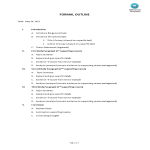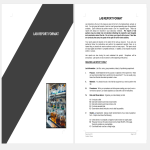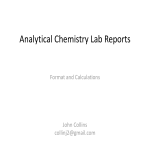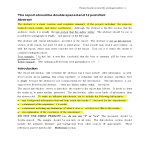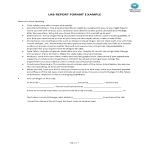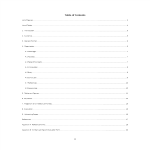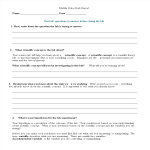Oscp lab report template plantillas, contratos y formularios.
How to create an OSCP Lab Report?
A lab report is a detailed document that summarizes and communicates the results of a scientific experiment. It serves several purposes, including documenting the methodology, presenting data, and drawing conclusions. Here are the key components and information that are important to include in a lab report:
- Title: Provide a concise and informative title that reflects the nature of the experiment.
- Title Page: Include a title page with your name, the names of any collaborators, the date, and the course/institution.
- Introduction: State the objective or purpose of the experiment. Provide relevant background information and scientific context. Formulate a clear hypothesis or research question.
- Materials and Methods: List all materials and equipment used in the experiment. Detail the experimental procedures in a step-by-step manner, allowing others to replicate the experiment. Include any modifications made to standard procedures.
- Experimental Design: Describe the experimental design, including the variables, controls, and any independent/dependent variables. Specify the sampling methods if applicable.
- Results: Present the raw data collected during the experiment. Use tables, graphs, and charts to organize and visualize the data. Ensure all units of measurement are consistent and clearly labeled. Provide calculated values, such as averages or standard deviations.
- Discussion: Analyze and interpret the results. Compare the results to the expected outcomes or predictions. Address any unexpected findings and potential sources of error. Discuss the implications of the results in the broader scientific context.
- Conclusion: Summarize the key findings of the experiment. Restate the hypothesis and indicate whether it was supported or rejected. Discuss the overall significance of the results.
- References: Cite any sources of information, literature, or previous studies that informed your experiment.
- Acknowledgments: Recognize any individuals, organizations, or funding sources that contributed to the experiment.
- Appendix: Include any additional information, such as raw data tables, calculations, or supplementary details.
- Formatting and Style: Follow the prescribed format and style guidelines provided by your instructor or the scientific community. Use clear, concise language and avoid unnecessary jargon. Ensure proper grammar, punctuation, and spelling.
It's important to note that specific requirements for lab reports may vary depending on the educational level, scientific discipline, and the instructor's preferences. Always refer to the guidelines provided by your instructor or institution to ensure that you address all necessary components in your lab report. See below useful Lab Report Templates:
